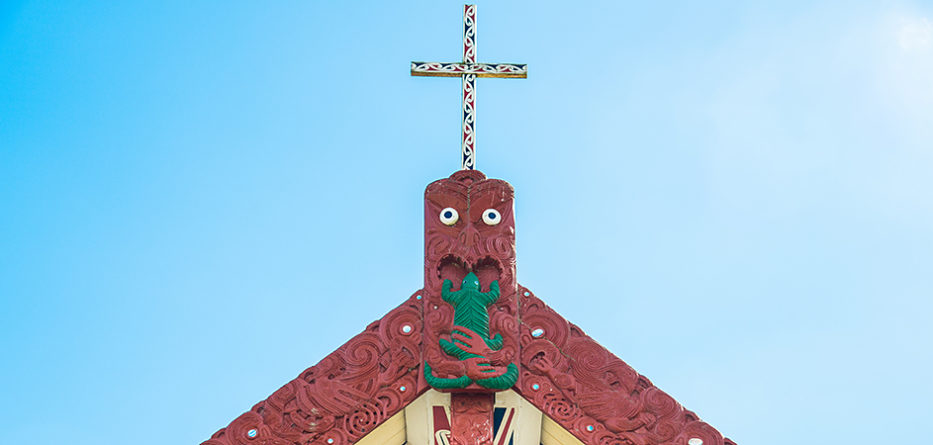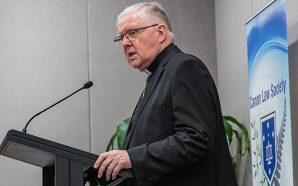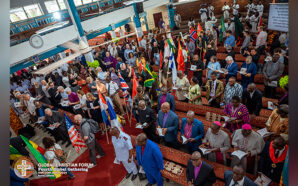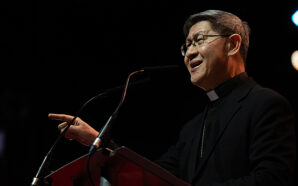Developing a sense of inclusiveness does not come about by running parallel Maori and European churches, says retired Bishop Peter Cullinane of Palmerston North
A retired Catholic bishop in New Zealand has acknowledged that the local Catholic Church has made serious mistakes in its approach to Māori.
“A Māori mission running in parallel with parishes had serious unintended side-effects: the parishes became European-monocultural, and diocesan priests received little or no training for ministry to Māori. These factors ensured that most Māori would not feel at home in our parish church celebrations of Eucharist,” said retired Bishop Peter Cullinane of Palmerston North in an article published in Tui Motu.
Developing a sense of inclusiveness does not come about by running parallel Māori and European churches, he said, adding that “any alterations to pastoral practices need to safeguard the right of Māori to continue to experience life and worship in the Church in ways that are natural to them.”
Rejection of racial prejudice
The Church in New Zealand is greatly indebted to the religious congregations such as the Society of Mary, the Daughters of Our Lady of Compassion, the Mill Hill Missionaries and the Congregation of Our Lady of the Missions to whom the Māori Mission was entrusted, he writes. However, the Catholic Church throughout New Zealand did make serious mistakes, the bishop said, while also pointing to the “failure to address prejudice or help people disadvantaged by personal, social or economic conditions”.
“Eucharistic life involves the rejection of racial prejudice and discrimination wherever these occur, said Bishop Cullinane. “Respect for the rights of the home people can be only a first step in our reaching out to the many others in our society who suffer from inequalities … It also involves our support for other ethnic groups who can be victims of racial prejudice. Anything less than a prophetic stand for all these is less than Eucharistic,” he said.
Failure to address racial and cultural prejudice as well as failure to redress disadvantages deriving from personal, social or economic conditions affecting any groups in society, can be evidence of the Second Vatican Council’s claim that “the split between the faith which many profess and their daily lives deserves to be counted among the more serious errors of our age,” Bishop Cullinane said.
Acknowledging the strengths of Māori culture
In resource material “Let us be fair and informed” published in 2004 on the Diocese of Palmerston North, Bishop Cullinane said:
When people’s disadvantages have resulted from historic injustices, redressing them is a matter of justice. The injustices included the land confiscations, and the serious social and economic deprivations that resulted from the confiscations. These included poorer living conditions, greater vulnerability to sickness and disease, and no financial resources for participating in the new cash economy. To these can be added what happened to Māori in an education system geared primarily to the needs and assumptions of the dominant culture, right up till the 1940’s.
John Paul II, when he visited New Zealand in 1986, pointed out how “a rich culture” of the Māori people already existed in the country before the arrival of the Church or many immigrants. He also spoke of the strengths of Māori culture – the spiritual dimension of every aspect of life; a profound reverence for nature and the environment; a sense of community assuring every individual that he or she belongs; loyalty to family and a great willingness to share; an acceptance of death as part of life and a capacity to grieve and mourn the dead in a human way. “It is as Māori that the Lord calls you; it is as Māori that you belong to the Church, the one body of Christ,” the late Polish pope said.
Missionaries from France first introduced Catholicism to New Zealand in 1838 and worked to evangelize the Māori. Later, settlers from the British Isles arrived, many of them Irish Catholics, and the Catholic Church became a settler church rather than a mission to Māori. The Catholic Church has grown to be the largest Christian denomination in New Zealand, with a culturally diverse membership of around 492,384 people, representing about 11.7 percent of the total population, according to the 2018 census.
Reproduced with permission from La Croix International.








